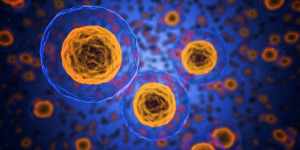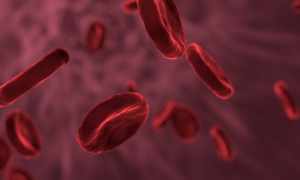The cell is the basic unit of life, and every activity inside our body is because of cells. However, our body requires some essential tasks to grow and develop. Only a few specialized cells perform such crucial functions inside your body to complete the requirements. To under this in-depth, we need to understand the difference between active and passive transport.
The cells present in the body require essential molecules such as water, oxygen, protein, sugar, etc. Transportation is crucial to supply such critical molecules to other cells. These transport mechanisms eliminate the waste product from the body for providing nutrients and other substances to other cells.
The essential transportation mechanism has two types – Active transport and Passive transport. Even though both of them have the same job to carry essential substances to cells, but their movements are different from each other. Here, we will elaborate on the difference between active and passive transport to understand how they function.
Table of Contents
Difference between active and passive transport
Here is the definition that explains the difference between active and passive transport:
Active transport
The essentials get carried from the low concentration gradient region to the high concentration gradient region in the active transport. Active transport carries large molecules such as protein, lipid, sugar, etc., to the cells. The direction from the lower to the upper region is what we call a unidirectional way.
Because of transporting upwards, some resistance occurs in this process. When resistance occurs, it uses Adenosine triphosphate as an energy form to pump up the vital molecules. The main reason behind the active name transport is because this process requires cellular energy.
Passive transport
Passive transport is also a way to carry out vital substances, chemicals, and nutrients to cells. However, in passive transport, the transport mechanism works in the opposite direction. It will be more comfortable to understand if we say that passive transport is a process of transporting essential substances to cells from the upper concentration gradient region to the lower concentration gradient region.
The mechanism of pumping essentials down uses a bi-directional way. A bidirectional way creates a lack of resistance during the process, which means it does not require any cellular energy to perform. It maintains the equilibrium of the concentration and works primarily in organs like the kidney, liver, and lungs. It diffuses wastes such as carbon dioxide, water, etc., to keep the balance in cells. Since it doesn’t require energy, we call it passive transport.

Classification to understand active and passive transport
There are two types of active transport; primary active carrier and secondary active transport. Check out how these two are different from one another:
Primary active transport
The first job that a primary active transport performs is identifying the substances that need to be carried out to the cells. It requires some proteins to identify such substances. It takes help from such proteins present in trans-membrane and performs the first job. Once it identifies essential molecules, it pumps up those molecules using cellular energy ATP.
Secondary active transport
It uses pore-forming proteins to help moving ions. This process uses an electromagnetic gradient to form channels in the cell membrane. Moreover, it allows molecules to move against the concentration gradient or cotransporters.
There are two types of concentration gradient – Symporters and Antiporters.
- Symporters- Both the ions and solutes move across the cell membrane in the same direction
- Antiporters– In this process, ions move across the concentration gradient, whereas the solutes move against it.
Types of the passive transport mechanism
There are four classifications of passive transport; Osmosis, Diffusion, Facilitated diffusion, and Filtration.
Osmosis
It is the process where a few specialized cell membranes transport water and other essential molecules. However, cells lacking negative water potential or a molecule’s solute potentiality are some of the main factors that affect this process.
Diffusion
The process of non-polar molecules or solutes transportation is diffusion or simple diffusion. Molecules follow this process to keep the distance short and have a smooth flow.
Facilitated diffusion
It is a standard passive transport mechanism. In this process, the molecules and ions pass through the specific trans membranes of integral proteins across the cell membrane. However, it is not the same with insoluble or large molecules. Large or insoluble molecules require a particular molecule to work as their carrier.
The carrier molecule helps those insoluble molecules transport through the plasma membrane without using any cellular energy. The human body uses various transport proteins to monitor the movements of ions and polar molecules during this process.
Filtration
The process of transporting water and other soluble substances across the cell membrane using hydrostatic pressure that the cardiovascular system creates in a human body. The name of this process is filtration because it filtrates out the soluble molecules and can pass through the membrane pore smoothly.
Movement of the respective transport
Active transport
The active transport process moves in a unidirectional way. It moves from the lower concentration gradient region to the upper concentration gradient region using cellular energy in Adenosine triphosphate.
Passive transport
Passive transport carries out vital molecules from the lower concentration gradient region to the upper concentration gradient region in a bi-directional way without using any cellular energy.
Energy requirements of the transport mechanism
Active transport
Active transport is a unidirectional process that requires cellular energy to pump in the vital substances up towards the upper concentration gradient region from the lower concentration gradient region. Additionally, the cellular energy it uses is Adenosine triphosphate.
Passive transport
It is a bi-directional transport mechanism where no resistance occurs during the process. Passive transport does not require any cellular energy to perform. That is the reason we call it passive transport.
The functionality of transport mechanisms
Active transport function
Even though both transport processes are to transport ions and molecules, active transport helps carry through the cell membrane.
Passive transport function
This is also a process to transport essential molecules to help the body grow and develop. However, it helps to maintain the balance of cells by eliminating wastes. Moreover, it helps to transport large molecules.

Type of molecules transported
Active transport
Active transport helps to transport macromolecules such as proteins, lipids, carbohydrates, giant cells, etc.
Passive transport
The process of passive transport helps to transport large and soluble molecules such as oxygen, water, monosaccharides, lipids, carbon dioxide, etc.
Selectivity of the two crucial processes
- Active transport process: It is highly selective
- Passive transport process: This process is partly non-selective
Effective factors
Check out some factors that determine the transport:
Temperature
When it comes to temperature, it is one of the factors that affect active transport. However, it does not affect the passive transport process.
Metabolic inhibitor
The active transport process immediately stops when there is a metabolic inhibitor. On the other hand, the passive transport process never gets influenced with or without a metabolic inhibitor.
Oxygen level
A decrease in oxygen level will instantly make the active transport process stop, but it does not affect the passive transport process.
Process type
Active transport: It is a vital, dynamic and rapid process
Passive transport: It is a physical and slow process.
Requirement of Carrier
Active transport process: It requires carrier proteins
Passive transport process: It has no requirements for carrier proteins
The direction of the two processes
Active transport process: It is one direction or unidirectional process
Passive transport process: It is an opposite or bi-directional process
Concentration gradient
Active transport process: It occurs against the concentration gradient
Passive transport process: it occurs along the concentration gradient
Requirement for cellular energy
Active transport process: It requires cellular energy in the form of Adenosine triphosphate to pump up molecules
Passive transport process: It does not require any cellular energy.
Allowance for accumulation
Active transport process: it allows the accumulation of substances in the cell.
Passive transport process: it does not allow any accumulation of substances in the cell.
Examples of active and passive transport
Example of active transport
A famous example of active transport is sodium/potassium pump. In this pump, the trans-membrane proteins identify the molecules. Those need transportation along with the fluid requirement of the cell. Further, ATP provides the hydrolysis energy it needs to pump up those molecules. It moves in the two ions of potassium and moves out three ions of sodium from the cell. Thus, it is an excellent example of primary active transport.
Another example of Active transport is sodium/calcium exchanger. It is an example of secondary active transport. Apart from these two, there are more examples like selecting glucose in the intestines, uptake of mineral ions by plant roots, etc.
Example of passive transport process
It occurs in organs like the liver, the alveoli of the lungs during the exchange of oxygen and carbon dioxide, and kidneys.
Difference between active and passive transport
To sum up, let us quickly have an overview of the difference between active and passive transport in a tabular form to make the distinction clearer:
| Particulars | Active Transport | Passive Transport |
| Meaning | Active transport refers to the movement of molecules across the cell membrane. Here, the molecules are pumped against the concentration gradient by using ATP. | In the case of passive transport, molecules move within and across the cell membrane. In this process, they transport through a concentration gradient without the usage of ATP. |
| Energy | The process of active transport needs cellular energy to function. | In passive transport, there is no cellular energy required. |
| Circulation | The circulation process happens from the lower concentration and goes to the higher concentration. | In passive, it is the opposite. The circulation process happens from the higher concentrations and moves to the lower. |
| Process | The process of active transportation is dynamic and quick. | Passive transportation is physical and relatively slow compared to active. |
| Goal | The main goal of active transport is to move all molecules like large cells, proteins, ions, and complex sugars. | The primary motive is to move the soluble molecules. These include oxygen, carbon dioxide, water, sex hormones, and lipids. |
| Protein | Proteins are required for active transport carriers. | For passive transport, carriers of protein are not needed. |
| Direction | Active transport happens in only one direction. | Passive transport is bidirectional. |
| Selective | The process is extremely selective. | The process is partly selective. |
| Temperature | Temperature influences the process | There is no connection with the temperature for passive transport. |
| Metabolic inhibitors | Metabolic inhibitors influence the active transport process. | There is no influence of the metabolic inhibitors for passive transportation. |
| Types | The types of active transport include sodium-potassium pump, Exocytosis, and Endocytosis. | The types of passive transport include diffusion, facilitated diffusion, and Osmosis. |
Final thoughts
This article helps to learn the critical difference between active and passive transport, the two primary biological processes, and their importance. Moreover, the process aims to fulfill the requirements and maintains the equilibrium of cells in our bodies.




























